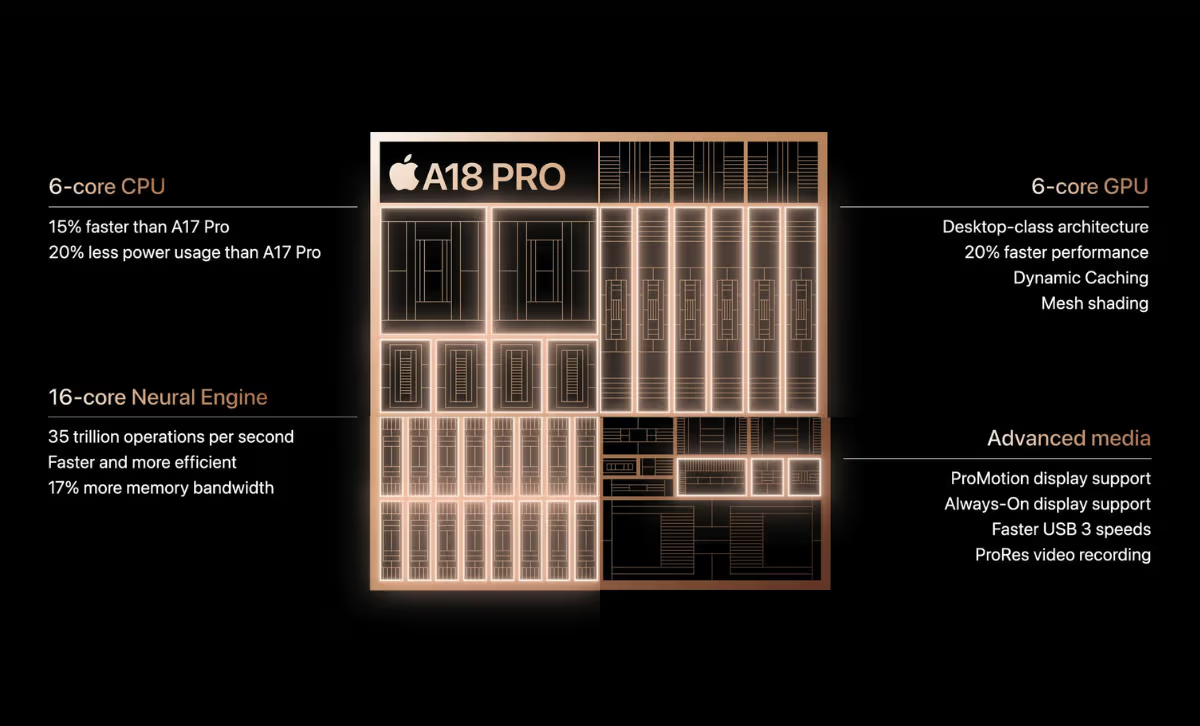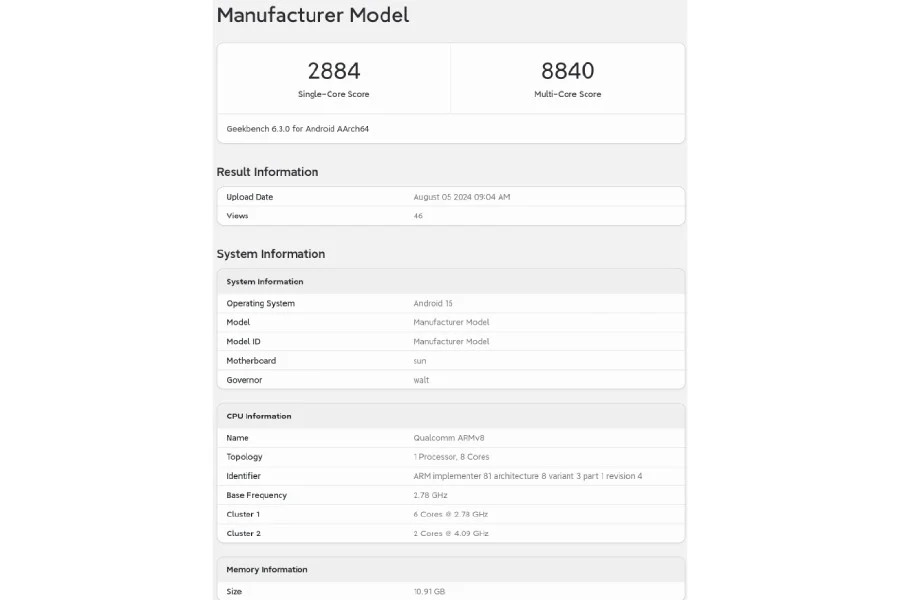Apple has just introduced the latest generation of its iPhone series, with the iPhone 16 Pro and iPhone 16 Pro Max at the forefront, powered by the new A18 Pro chipset. The A18 Pro is Apple’s most advanced mobile processor to date, delivering cutting-edge performance. However, Qualcomm is set to launch its Snapdragon 8 Gen 4 chipset, which is expected to go head-to-head with Apple’s offering. Although the Snapdragon 8 Gen 4 is yet to be officially released, rumors and early reports provide an interesting comparison between these two flagship processors.
Here’s a deep dive into the specifications, performance, and how they stack up against each other.
Snapdragon 8 Gen 4 vs Apple A18 Pro: Specifications
Apple A18 Pro
The A18 Pro powers the new iPhone 16 Pro series and is built on TSMC’s 3nm process technology, which provides enhanced power efficiency and performance. It features a 6-core CPU with two high-performance cores clocked at 4.05GHz and four efficiency cores running at 2.2GHz. The chipset also includes a 6-core GPU with a clock speed of 1.45GHz and Ray Tracing capabilities for hardware-accelerated gaming performance.
Complementing the CPU and GPU is Apple’s 16-core Neural Engine, which can handle 35 trillion operations per second. This enables real-time data processing and performance in complex tasks like image processing, gaming, and augmented reality. The A18 Pro focuses heavily on both raw performance and efficiency, making it one of the fastest mobile processors available.
Qualcomm Snapdragon 8 Gen 4 (Rumored)
Qualcomm’s Snapdragon 8 Gen 4 is expected to be based on the same 3nm process from TSMC, similar to the A18 Pro. The Snapdragon 8 Gen 4 will reportedly have a slightly different core configuration with two high-performance cores running at a higher clock speed of 4.37GHz and six efficiency cores operating at 2.78GHz. These cores are expected to offer a balance between power and energy savings.
Paired with the processor is the Adreno 830 GPU, which is rumored to have a clock speed of 1.25GHz. While not as fast as Apple’s GPU, the Adreno 830 is also expected to support hardware-accelerated Ray Tracing, allowing it to handle advanced gaming graphics and simulations. Qualcomm’s Adreno series has historically been strong in graphics, and the Adreno 830 should maintain this reputation.
Performance Comparison: Apple A18 Pro vs Snapdragon 8 Gen 4
GeekBench Scores

With the A18 Pro already released, benchmark results give a clearer picture of its performance. In GeekBench, the A18 Pro achieved a score of approximately 3,409 in the single-core test and 8,492 in the multi-core test. This positions the A18 Pro as one of the best-performing processors in the mobile space, especially in single-core tasks, where Apple traditionally excels.
On the other hand, early rumors surrounding the Snapdragon 8 Gen 4 suggest it recently surfaced on GeekBench as well, scoring around 2,884 points in the single-core test and 8,840 points in the multi-core test. It’s important to note that this score was based on the earlier 4.09GHz clock speed, not the rumored 4.37GHz. When Qualcomm officially launches the Snapdragon 8 Gen 4, its performance might edge even closer to Apple’s A18 Pro, particularly in multi-core performance, where Qualcomm has made significant strides.
Graphics Performance
In terms of GPU, both chipsets support Ray Tracing, though Apple’s higher clock speeds for the GPU (1.45GHz) give it a slight edge over the Snapdragon’s 1.25GHz Adreno 830. Apple’s commitment to seamless hardware and software integration might allow the A18 Pro to perform slightly better in gaming and graphics-heavy tasks. However, Qualcomm has consistently delivered excellent gaming performance with its Adreno series, and the Snapdragon 8 Gen 4 is expected to hold its own in this area.
Battery Efficiency
Both the A18 Pro and Snapdragon 8 Gen 4 are built on the 3nm process, which is designed to improve power efficiency alongside performance. Apple has always focused on maximizing battery life through efficient hardware-software synergy, so the A18 Pro is expected to offer solid battery life even during intensive tasks.
The Snapdragon 8 Gen 4 is also expected to bring improvements in power efficiency compared to its predecessor. Qualcomm’s new core architecture, coupled with the 3nm process, is likely to deliver significant gains in this regard. Early reports suggest Qualcomm’s solution may slightly outperform Apple in terms of sustained performance under load, though actual battery life comparisons will depend on the devices they are used in.
Conclusion
Apple’s A18 Pro sets the benchmark with its high single-core performance and impressive GPU clock speeds, offering top-tier mobile performance for the iPhone 16 Pro series. Qualcomm’s Snapdragon 8 Gen 4, while not yet officially released, shows strong potential in terms of multi-core processing and could close the gap with Apple’s latest offering, especially with its rumored 4.37GHz clock speed.
The Snapdragon 8 Gen 4 is shaping up to be a formidable competitor in the mobile processor market. With Qualcomm expected to officially launch the Snapdragon 8 Gen 4 next month, it will be interesting to see how it stacks up against Apple’s A18 Pro in real-world usage and benchmarks. For now, Apple holds the edge in single-core performance, but Qualcomm is narrowing the gap, particularly in multi-core and gaming performance.










